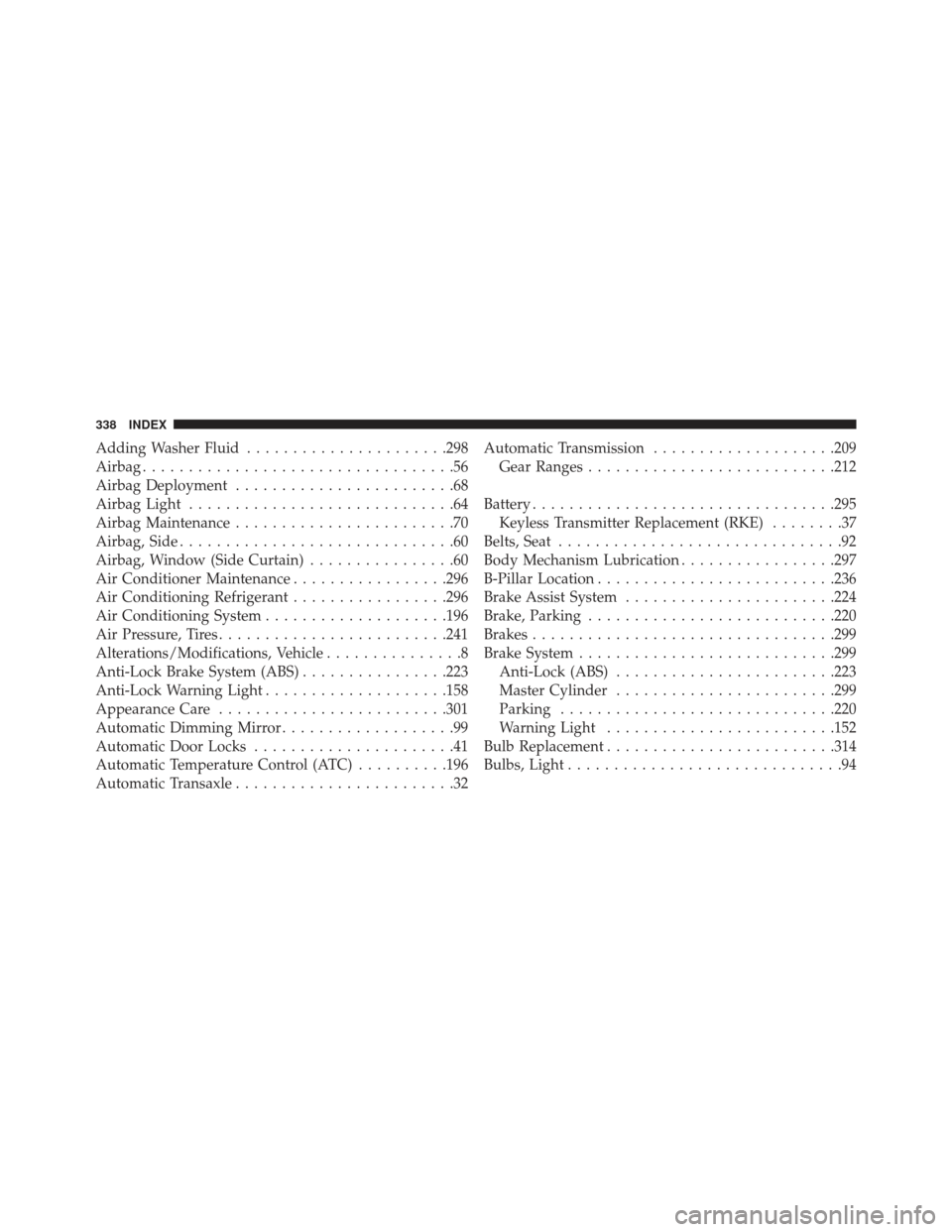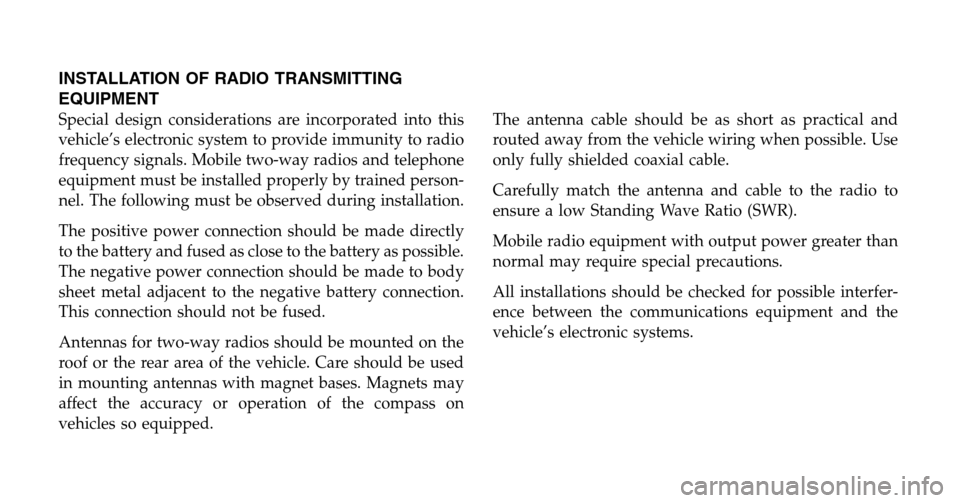Page 316 of 350
FPT2010 Amp
Red Electronic Vehicle
Control Unit
(EVCU)
Cavity
Cartridge Fuse Description
FPT3 25 Amp Clear Batt Coolant
Pump
FPT5 20 Amp Yellow Inverter Coolant
Pump
VEHICLE STORAGE
The preferred way of storing your vehicle for a long
period of time is to leave it attached to a Level 1 or Level
2 charger. The vehicle has a wake-up feature that will
wake the system every 3 weeks and do a maintenance
charge on the 12 Volt battery and also top off the high
voltage battery if necessary. Anytime you store your vehicle, or keep it out of service
(i.e., vacation) for two weeks or more, run the air
conditioning system at idle for about five minutes in the
fresh air and high blower setting. This will ensure
adequate system lubrication to minimize the possibility
of compressor damage when the air conditioning system
is started again.
REPLACEMENT BULBS
Interior Bulbs
Bulb Number
Overhead Lamp C5W
Courtesy Lamp W5W
314 MAINTAINING YOUR VEHICLE
Page 320 of 350
4. Remove the tail, stop, or turn signal bulbs by pushingthem slightly and turning counter-clockwise.
5. Remove the backup lamp bulb by pulling straight out.
6. Replace lamps as required and reinstall lamp.
Center High Mounted Stop Lamp (CHMSL)
1. Remove the two guard caps and the two fastening screws. 2. Remove the center high mounted stop lamp assembly.
3. Disconnect the electric connector.
4. Remove the two screws.
5. Replace the CHMSL assembly.
6. Reinstall the two screws.
FLUID CAPACITIES
Systems
U.S.Metric
Power Electronics Cooling System 3.6 Quarts3.5 Liters
Battery Thermal Management Cooling System 7.0 Quarts6.7 Liters
Single-Speed Transmission 0.8 Quart750 ml
318 MAINTAINING YOUR VEHICLE
Page 324 of 350
MAINTENANCE SCHEDULE
Once A Month Or Before A Trip:
•Check windshield washer fluid level
• Check the tire inflation pressures and look for unusual
wear or damage
• Check the fluid levels of the coolant reservoirs and
brake master cylinder
• Check function of all interior and exterior lights
Required Maintenance Intervals.
Refer to the maintenance schedules on the following
page for the required maintenance intervals.
At Every Service Interval:
• Rotate the tires. Rotate at the first sign of irregu-
lar wear.
• Inspect brake pads, shoes, rotors, drums, and
hoses.
• Inspect battery cooling system protection and
hoses.
• Check and adjust hand brake.
Maintenance Chart
Refer to the Maintenance Schedules on the following
pages for the required maintenance intervals.
8
M A I
N T
E
N
A
N
C E
S
C
H E
D
U L
E
S322 MAINTENANCE SCHEDULES
Page 326 of 350
Mileage or time passed
(whichever comes first)
20,000
30,000
40,000
50,000
60,000
70,000
80,000
90,000
100,000
110,000
120,000
130,000
140,000
150,000
Or Years: 2 3 4 5 6 7 8 9 10 11 12 13 14 15
Or Kilometers:
32,000
48,000
64,000
80,000
96,000
112,000
128,000
144,000
160,000
176,000
192,000
208,000
224,000
240,000
Flush and replace the Power
Electronics and Battery Thermal
Loop Systems at 10 years or
150,000 miles (240,000 km)
whichever comes first. XX
8
M
A I
N T
E
N
A
N
C E
S
C
H E
D
U L
E
S324 MAINTENANCE SCHEDULES
Page 340 of 350

Adding Washer Fluid..................... .298
Airbag ..................................56
Airbag Deployment ........................68
Airbag Light .............................64
Airbag Maintenance ........................70
Airbag, Side ..............................60
Airbag, Window (Side Curtain) ................60
Air Conditioner Maintenance .................296
Air Conditioning Refrigerant .................296
Air Conditioning System ....................196
Air Pressure, Tires ........................ .241
Alterations/Modifications, Vehicle ...............8
Anti-Lock Brake System (ABS) ................223
Anti-Lock Warning Light ....................158
Appearance Care ........................ .301
Automatic Dimming Mirror ...................99
Automatic Door Locks ......................41
Automatic Temperature Control (ATC) ..........196
Automatic Transaxle ........................32 Automatic Transmission
....................209
Gear Ranges .......................... .212
Battery ................................ .295
Keyless Transmitter Replacement (RKE) ........37
Belts, Seat ...............................92
Body Mechanism Lubrication .................297
B-Pillar Location ......................... .236
Brake Assist System ...................... .224
Brake, Parking .......................... .220
Brakes ................................ .299
Brake System ........................... .299
Anti-Lock (ABS) ....................... .223
Master Cylinder ....................... .299
Parking ............................. .220
Warning Light ........................ .152
Bulb Replacement ........................ .314
Bulbs, Light ..............................94
338 INDEX
Page 344 of 350

Tire Pressure Monitoring (TPMS)............159
Traction Control ....................... .228
Turn Signal ............................94
Warning (Instrument Cluster Description) ......152
Loading Vehicle Tires ............................... .236
Locks Automatic Door .........................41
Door .................................39
Power Door ............................41
Lubrication, Body ........................ .297
Maintenance Free Battery ....................295
Maintenance, General ..................... .287
Maintenance Procedures ....................287
Maintenance Schedule ..................... .322
Manual, Service ......................... .332
Master Cylinder (Brakes) ....................299
Mirrors .................................98 Automatic Dimming
......................99
Electric Powered ....................... .100
Heated .............................. .101
Modifications/Alterations, Vehicle ...............8
Multi-Function Control Lever .................119
Occupant Restraints ........................63
Occupant Restraints (Sedan) ..................44
Operator Manual (Owner’s Manual) .............4
Owner’s Manual (Operator Manual) .............4
Paint Care ............................. .301
Parking Brake ........................... .220
Passing Light ........................... .120
Placard, Tire and Loading Information ..........236
Power Door Locks ............................41
Mirrors ............................. .100
Outlet (Auxiliary Electrical Outlet) ...........140
342 INDEX
Page 347 of 350

Air Pressure.......................... .240
General Information .....................240
High Speed .......................... .243
Inflation Pressures ...................... .241
Life of Tires .......................... .246
Load Capacity ........................ .236
Pressure Warning Light ...................159
Quality Grading ....................... .333
Radial .............................. .243
Replacement .......................... .247
Rotation ............................. .250
Safety .............................. .230
Sizes ............................... .231
Snow Tires ........................... .244
Spinning ............................ .245
Tread Wear Indicators ....................246
Tire Safety Information .....................230
To Open Hood ...........................117
Towing ............................... .258Disabled Vehicle
....................... .280
Recreational .......................... .258
Traction ............................... .216
Traction Control ......................... .225
Trailer Towing .......................... .258
Transaxle Automatic .............................32
Transmission Automatic ........................... .209
Transmitter Battery Service (Remote Keyless Entry) . .37
Tread Wear Indicators ..................... .246
Turn Signals ............................ .120
UCI Connector .......................... .193
Uniform Tire Quality Grades .................333
Universal Consumer Interface (UCI) Connector . . . .193
Untwisting Procedure, Seat Belt ................52
Vehicle Identification Number (VIN) .............7
10
INDEX 345
Page 349 of 350

INSTALLATION OF RADIO TRANSMITTING
EQUIPMENT
Special design considerations are incorporated into this
vehicle’s electronic system to provide immunity to radio
frequency signals. Mobile two-way radios and telephone
equipment must be installed properly by trained person-
nel. The following must be observed during installation.
The positive power connection should be made directly
to the battery and fused as close to the battery as possible.
The negative power connection should be made to body
sheet metal adjacent to the negative battery connection.
This connection should not be fused.
Antennas for two-way radios should be mounted on the
roof or the rear area of the vehicle. Care should be used
in mounting antennas with magnet bases. Magnets may
affect the accuracy or operation of the compass on
vehicles so equipped.The antenna cable should be as short as practical and
routed away from the vehicle wiring when possible. Use
only fully shielded coaxial cable.
Carefully match the antenna and cable to the radio to
ensure a low Standing Wave Ratio (SWR).
Mobile radio equipment with output power greater than
normal may require special precautions.
All installations should be checked for possible interfer-
ence between the communications equipment and the
vehicle’s electronic systems.